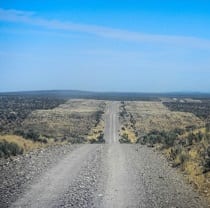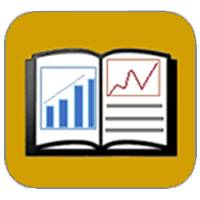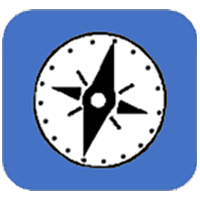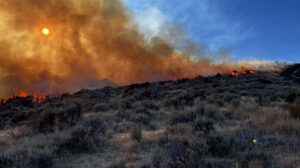Fuels & Fuel Treatments
Discussion Recording.
An informal discussion on current fuel break knowledge from science and management. Brief presentations on the latest in fuel break science and practice, and discussions around your fuel break questions.
Presenters: Doug Shinneman, Research Fire Ecologist with USGS, and Lance Okeson, Fire Management Officer with Boise District BLM
Workshop information and registration.
The Bureau of Land Management and U.S. Forest Service will host a public workshop to present information and gather feedback on a range of topics regarding the science and management of pinyon and juniper woodlands, particularly mature and old-growth forests.
The workshop will occur May 8, 1-5 p.m. and May 9, 9 a.m.-5 p.m., 2024, at the Nugget Casino Resort, 1100 Nugget Ave., Sparks, NV, 89431. This event is part of BLM’s ongoing public comment period on pinyon and juniper woodlands, during which interested parties may also submit comments regarding management and conservation of pinyon and juniper ecosystems. Please see more information on how to comment below.
Workshop information and registration
Topics for the workshop will include classifying the various pinyon and juniper systems and understanding their geographic and population dynamics, methods for assessing woodland conditions, values associated with old-growth pinyon and juniper woodlands, management objectives and effectiveness, and opportunities for increasing climate resilience. Participants will have opportunities to engage and interact on a range of topics.
To attend the event, individuals are required to reserve a spot. This is a two-day workshop, but you must register for both days to attend. To attend on May 8, please register through the eventbrite portal for day one. To attend on May 9, please register through the eventbrite portal for day two.
Video recording (8:26).
Matt Reeves provides a westwide rangeland fuel assessment for 2024.
View article.
We hypothesized that linear projects were more efficient at intercepting individual fire events over larger spatial domains, whereas radial projects conferred a higher level of network redundancy in terms of the length of the fuel break exposed to fires. We simulated implementation of the alternative project geometries and then examined fuel break-wildfire spatial interactions using a library of simulated fires developed in prior work. The results supported the hypothesis, with linear projects exhibiting substantially greater efficiency in terms of intercepting fires over larger areas, whereas radial projects had a higher interception length given a fire encountered a project. Adding economic objectives made it more difficult to obtain alternative project geometries, but substantially increased net revenue from harvested trees. We discuss how the model and results can be used to further understand decision tradeoffs and optimize the implementation of planned fuel break networks in conjunction with landscape conservation, protection, and restoration management in fire prone regions.
View synthesis.
Increased understanding of how mechanical thinning, prescribed burning, and wildfire affect subsequent wildfire severity is urgently needed as people and forests face a growing wildfire crisis. In response, we reviewed scientific literature for the US West and completed a meta-analysis that answered three questions: (1) How much do treatments reduce wildfire severity within treated areas? (2) How do the effects vary with treatment type, treatment age, and forest type? (3) How does fire weather moderate the effects of treatments? We found overwhelming evidence that mechanical thinning with prescribed burning, mechanical thinning with pile burning, and prescribed burning only are effective at reducing subsequent wildfire severity, resulting in reductions in severity between 62% and 72% relative to untreated areas. In comparison, thinning only was less effective – underscoring the importance of treating surface fuels when mitigating wildfire severity is the management goal. The efficacy of these treatments did not vary among forest types assessed in this study and was high across a range of fire weather conditions. Prior wildfire had more complex impacts on subsequent wildfire severity, which varied with forest type and initial wildfire severity. Across treatment types, we found that effectiveness of treatments declined over time, with the mean reduction in wildfire severity decreasing more than twofold when wildfire occurred greater than 10 years after initial treatment. Our meta-analysis provides up-to-date information on the extent to which active forest management reduces wildfire severity and facilitates better outcomes for people and forests during future wildfire events.
View article.
Predicted fire-moderation benefits over the first 4 years of fuel break implementation were modest and variable, but, generally, increases in exotic annual grasses and their associated fire risks were not observed. Nonetheless, ancillary evidence from shrublands would suggest that treatment-induced shifts from shrub to herbaceous fuel dominance are expected to improve conditions for active fire suppression in ways not readily represented in available fire models.
The SageSTEP research team invites you to join us for a tour of the Onaqui research site near Tooele, Utah on May 21, 2024. We will tour the SageSTEP (https://sagestep.org/) shrubland network, SageSTEP woodland network and NEON sites (https://www.neonscience.org/field-sites/onaq), hear results from the past 15 years of data collection, and discuss management needs and research priorities for the next decade. We are particularly interested in hearing management perspectives on areas of greatest future need. 2024 field tour flyer
Logistics
Tooele is less than an hour from SLC. Lodging options include the Holiday Inn and Best Western. We recommend SUV/Trucks, particularly if there is rain prior to the tour.
Meet at 8am on Tuesday, May 21 at the Holiday Inn in Tooele (Address: 1531 N Main St, Tooele, UT 84074) to carpool/caravan to the Onaqui site. We plan to return to Tooele by 5pm. Please bring adequate food/water and be prepared to be outside all day.
There will be a no-host dinner on Monday, May 20 at 6 pm for any who can join.
Please RSVP to Lisa Ellsworth at: lisa.ellsworth@oregonstate.edu
Burn Plan Event information and registration.
Event flyer to forward to others.
Join us in the field to discuss prescription burn planning, treatments, monitoring, and results with Duncan Leao, Steve Howell, and Ali Paulson, USFS. This is an informal discussion open to all.
Webinar recording.
Sam “Jake” Price and Matt Germino, USGS Forest & Rangeland Ecosystem Science Center, present findings from their recent publication on the Soda Fire fuel breaks and how they might help to break the annual grass-fire cycle. Q&A to follow the presentation.
Webinar recording.
In this LANDFIRE Office Hour, USFS Research Ecologists, Jen Costanza and Matt Reeves walk viewers through the USDA Forest Service’s Resource Planning Act (2020) Assessment, with a focus on how LANDFIRE data supports understanding of recent and future drought exposure for rangeland vegetation types across the western U.S. The also discuss emerging technologies for evaluating vegetative drought response and fuels management reliant on several forms of LANDFIRE data.









